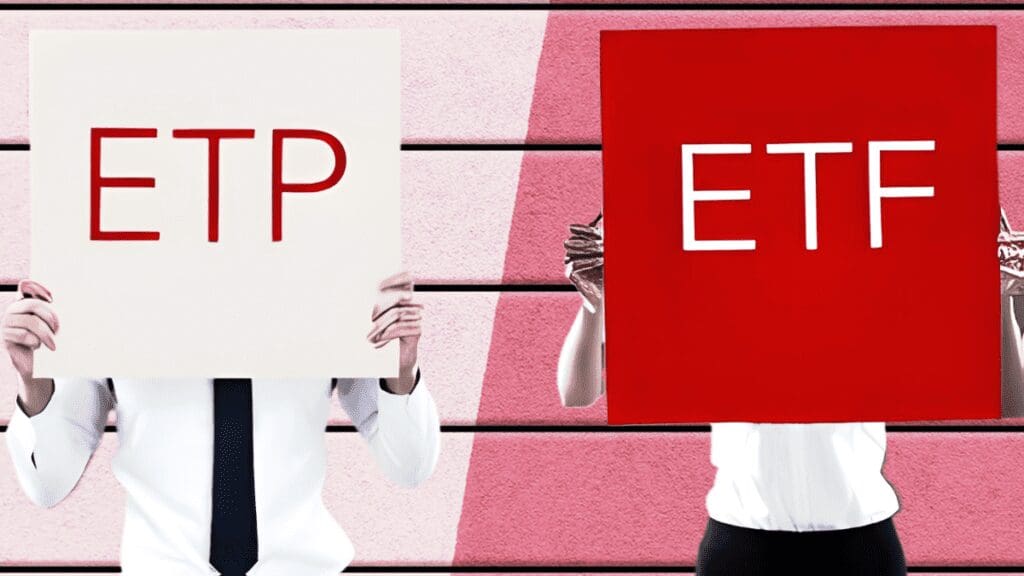In the evolving landscape of cryptocurrency investments, understanding the distinctions between exchange-traded products (ETPs) and exchange-traded funds (ETFs) is crucial for optimizing your investment strategy. Although these terms may seem interchangeable, they represent different financial instruments with unique characteristics. Here’s a comprehensive guide to help you navigate the choice between ETPs and ETFs for gaining exposure to digital assets like Bitcoin and Ethereum.
Understanding ETPs: A Broad Overview
Exchange-Traded Products, or ETPs, encompass a range of investment vehicles that can be traded on stock exchanges. These products track the value of various assets, including cryptocurrencies, commodities, and indices. Unlike direct asset ownership, ETPs allow investors to gain exposure to markets without holding the assets themselves.
Types of ETPs:
- Exchange-Traded Notes (ETNs): These are debt instruments issued by banks that track the price of an underlying asset, such as Bitcoin. However, ETNs carry the risk associated with the issuer’s creditworthiness.
- Exchange-Traded Commodities (ETCs): ETCs focus on commodities and are usually backed by the physical asset, offering a more secure way to gain exposure compared to ETNs.
In Europe, ETPs are available on major exchanges like the SIX Swiss Exchange and Germany’s Deutsche Börse, providing access to a variety of digital assets and blockchain-related products.
Exploring ETFs: A Specific Subset of ETPs
ETFs are a specific category within the broader ETP framework. They represent a portfolio of assets and are designed to track the performance of a particular index or group of assets. In the context of cryptocurrencies, ETFs have garnered significant attention, especially with the introduction of Bitcoin and Ethereum ETFs in the U.S.
Key Characteristics of Crypto ETFs:
- Direct Exposure: Crypto ETFs hold actual cryptocurrencies or a basket of digital assets, providing direct exposure to the underlying assets.
- Regulation and Liquidity: ETFs generally benefit from higher regulatory oversight and liquidity compared to other ETPs, making them a preferred choice for many investors.
Countries like Canada have been at the forefront of offering crypto ETFs, providing early access to Bitcoin and Ethereum ETFs since 2021.
ETPs vs ETFs: Key Differences
- Structure and Exposure:
- ETPs: Include various products like ETNs and ETCs, offering diverse ways to invest in cryptocurrencies and related assets. They may track a wide range of assets or focus on specific sectors.
- ETFs: Specifically track a portfolio of cryptocurrencies or a single digital asset, providing straightforward investment options with direct exposure.
- Risk Profile:
- ETPs: Risk varies based on the product type. ETNs are subject to the credit risk of the issuer, while ETCs are generally backed by the actual commodity, offering more security.
- ETFs: Typically offer lower risk as they directly hold the underlying assets. They are less affected by the issuer’s financial stability and provide clearer exposure to the asset’s price movements.
- Liquidity and Regulation:
- ETPs: Liquidity can vary, particularly for products tracking less popular assets. Regulatory oversight also differs based on the type of ETP.
- ETFs: Known for higher liquidity and regulatory scrutiny, particularly in markets like the U.S., where they are subject to stringent rules by the SEC.
Choosing Between ETPs and ETFs: Which Is Right for You?
When to Consider ETPs: ETPs offer flexibility and can be suitable for investors looking to diversify their exposure across a range of assets or sectors. They are particularly useful if you want to invest in less mainstream cryptocurrencies or a mix of digital and traditional assets.
When to Opt for ETFs: If you prefer a more straightforward investment with direct exposure to major cryptocurrencies like Bitcoin and Ethereum, ETFs are likely the better choice. They provide transparency, liquidity, and are generally considered safer due to their regulatory oversight.
Final Thoughts
The choice between ETPs and ETFs depends on your investment objectives, risk tolerance, and the type of exposure you seek. By understanding the nuances of these products, you can make informed decisions that align with your financial goals and navigate the evolving crypto investment landscape with greater confidence.
Also Read: Top Crypto ETFs of 2024: Best Investment Opportunities for Smart Investors

